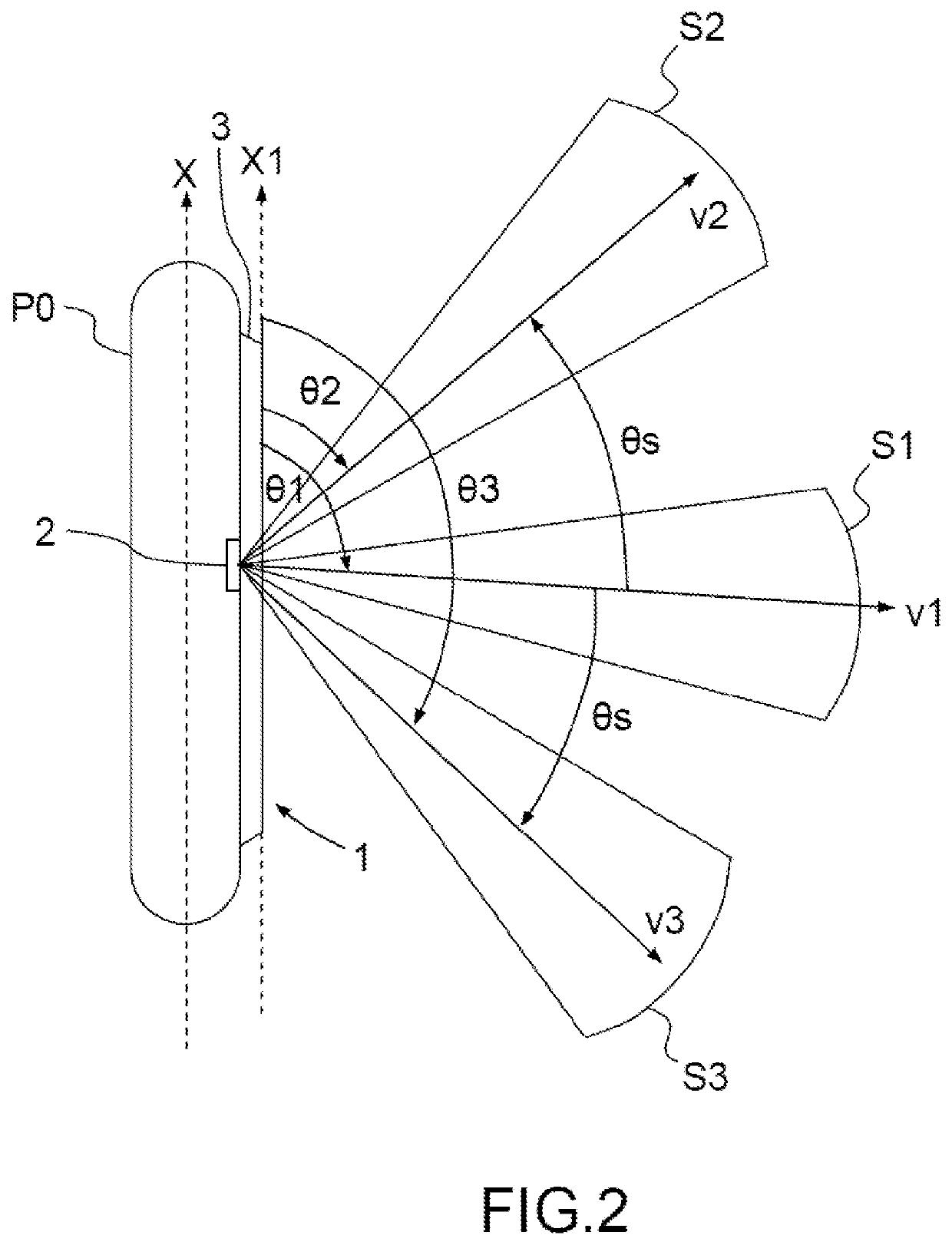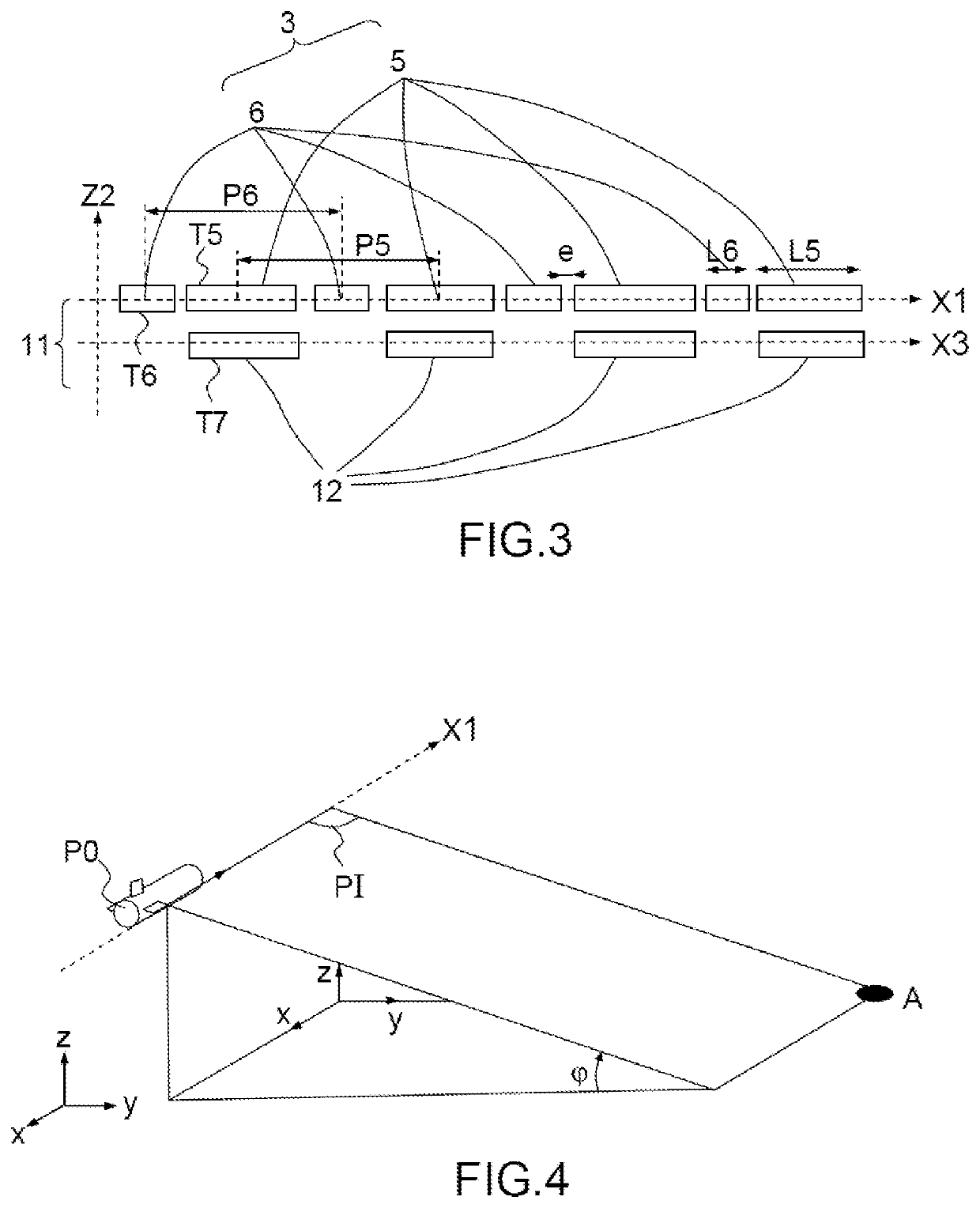Synthetic antenna sonar and method for forming synthetic antenna beams
a synthetic antenna and beam technology, applied in the field the detection and classification of objects by means of synthetic aperture sonar, can solve the problems of difficult to solve the question of object classification, determination of delays, and remains unsatisfactory, and achieve the effect of not, without reducing its detection and classification capabilities
- Summary
- Abstract
- Description
- Claims
- Application Information
AI Technical Summary
Benefits of technology
Problems solved by technology
Method used
Image
Examples
Embodiment Construction
[0035]The invention relates to a mono-aspect or multi-aspect synthetic aperture sonar. By “mono-aspect synthetic aperture sonar”, what is meant is a synthetic aperture sonar intended to move along a first axis, the sonar comprising an emitting device configured to emit, in each ping, an acoustic pulse toward an observed zone in a single sector, the sonar comprising a first physical receiving antenna allowing measurements of backscattered signals generated by said pulse to be acquired and a processing device configured to form, over R pings, synthetic aperture beams from measurements of signals backscattered by the observed zone, which signals are generated by acoustic pulses emitted in said sector. The acoustic pulses are emitted along a single sighting axis in a single sector surrounding the sighting axis. This sighting axis may be attached to the antenna or be directed in a fixed direction in the terrestrial reference frame, for example by means of a stabilizing device. By “sector...
PUM
 Login to View More
Login to View More Abstract
Description
Claims
Application Information
 Login to View More
Login to View More - R&D
- Intellectual Property
- Life Sciences
- Materials
- Tech Scout
- Unparalleled Data Quality
- Higher Quality Content
- 60% Fewer Hallucinations
Browse by: Latest US Patents, China's latest patents, Technical Efficacy Thesaurus, Application Domain, Technology Topic, Popular Technical Reports.
© 2025 PatSnap. All rights reserved.Legal|Privacy policy|Modern Slavery Act Transparency Statement|Sitemap|About US| Contact US: help@patsnap.com



